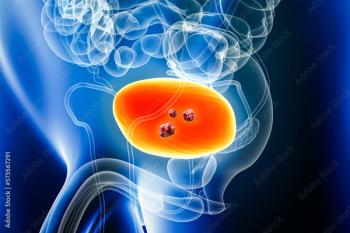
5 Patient Populations That Need More Vitamin D
Pharmacists receiving questions from patients about vitamin D supplementation can reinforce the important role that the vitamin plays in the body namely, its benefits for strong bones and healthy muscles.
Pharmacists receiving questions from patients about vitamin D supplementation can reinforce the important role that the vitamin plays in the body—namely, its benefits for strong bones and healthy muscles.
There is also evidence that sufficient vitamin D levels may protect against colon, prostate, and breast cancers. Vitamin D can also prevent and treat osteoporosis.
Recommended daily amounts of vitamin D are as follows, according to the National Institutes of Health’s Office of Dietary Supplements:
- Birth to 12 months: 400 IU
- Children 1 to 13 years: 600 IU
- Teens 14 to 18 years: 600 IU
- Adults 19 to 70 years: 600 IU
- Adults 71 years and older: 800 IU
- Pregnant and breastfeeding women: 600 IU
However, many patient populations may be lacking in the vitamin D department, which could result from insufficient sun exposure, a lack of fortified food or food that naturally contains the vitamin, or a lack of supplementation.
Here are 5 patient populations that pharmacists can educate about the importance of getting enough vitamin D:
1. African-American and Hispanic Adolescents
A recent study published in The Journal of Pediatrics tested 3 different doses of vitamin D3 treatment in 183 vitamin D-deficient teens.
In the study, African-American and Hispanic adolescents received 50,000 IU, 5000 IU, or 1000 IU doses of supplementation.
After 8 weeks, the researchers found that 72% of the teens on the highest dose achieved sufficient vitamin D levels. Meanwhile, a little more than half (56%) had sufficient levels at 5000 IU, and only 2% of those taking the 1000 IU dosage saw sufficient levels.
The researchers also found that the adolescents who were obese saw fewer improvements in vitamin D levels, so they may need higher doses than teens at a healthy weight.
2. HIV-Positive Adults
HIV-positive adults who have low levels of vitamin D may not respond as well to HIV treatment compared with patients with adequate levels.
A study published in Clinical Nutrition examined the relationship between vitamin D levels and CD4+T-cell improvements over an 18-month period of highly active antiretroviral therapy (HAART).
The study enrolled almost 400 adults whose CD4+T-cell counts were measured at baseline and after 3, 6, 12, and 18 months. At the start of the study, 17% had deficient levels, 60% had insufficient levels, and 23% had sufficient levels.
The researchers found that CD4+T-cell counts were “persistently” lower for the patients who had insufficient and deficient levels compared with those who had sufficient levels.
The study authors concluded that vitamin D deficiency was linked to lower absolute CD4+T-cell count recovery for HIV-positive adults on HAART.
“Vitamin D supplementation may improve CD4+T-cell recovery during HAART,” the researchers stated. “However, future intervention studies are needed to definitively evaluate the effectiveness of this vitamin as an adjunct therapy during HAART.”
3. College-Aged Women
A
The study published in Psychiatry Research also found that not having enough vitamin D increased the likelihood that the women experienced depressive symptoms, as well.
Rates of depressive symptoms were between 34% and 42%, and after controlling for several factors such as race, diet, and time outside, the researchers determined that lower vitamin D levels predicted depressive symptoms.
4. Patients with Asthma
Pharmacists should encourage patients with asthma to make sure that they have sufficient vitamin D levels, since deficiencies can make them more susceptible to acute asthma attacks.
A
The researchers suggested that patients with asthma seek vitamin D screening and may want to consider supplementation.
5. Patients with COPD
Patients with chronic obstructive pulmonary disease (COPD) may see fewer and less severe flare-ups if they maintain sufficient levels of vitamin D.
A
The 240 patients involved in the study received either 6 twice-monthly doses of supplementation or placebo.
While the patients who had serum 25-hydroxyvitamin D concentrations of at least 50 nmol/L at baseline saw less of an impact, those who received supplementation generally saw improvements in their COPD symptoms during flare-ups.
“Flare-ups of chronic bronchitis and emphysema can be debilitating for patients, sometimes leading to hospitalization and even death,” lead study author Adrian Martineau, PhD, said in a press release.
“Our research has shown how an inexpensive vitamin supplement can significantly reduce the risk of flare-ups for patients who are vitamin D deficient, which could have a major public health benefit.”
Newsletter
Stay informed on drug updates, treatment guidelines, and pharmacy practice trends—subscribe to Pharmacy Times for weekly clinical insights.










































































































































































































